Facebook group Air Force AMN/NCO/SNCO posted a couple of slides of proposed Physical Training Uniform Designs.
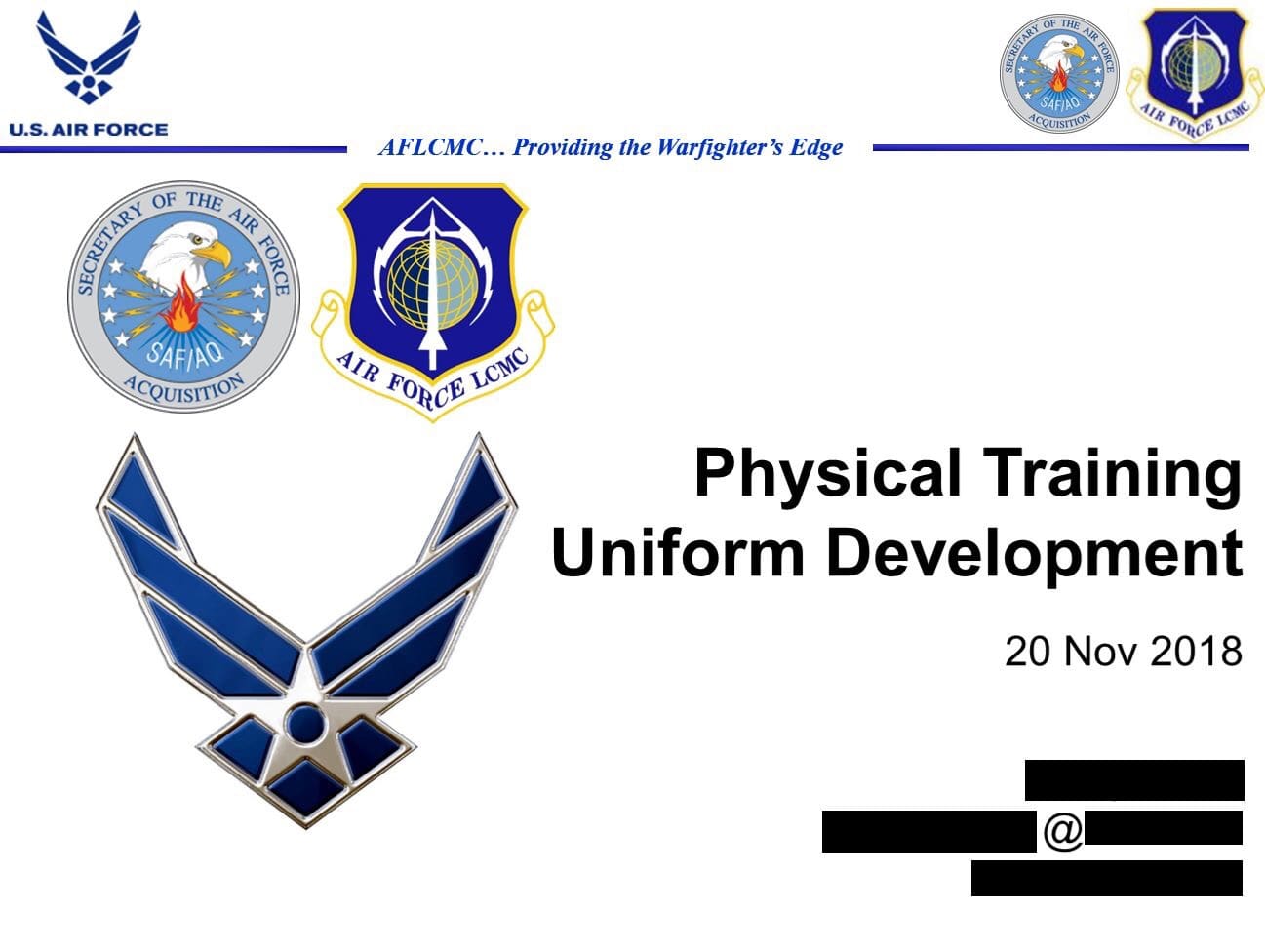
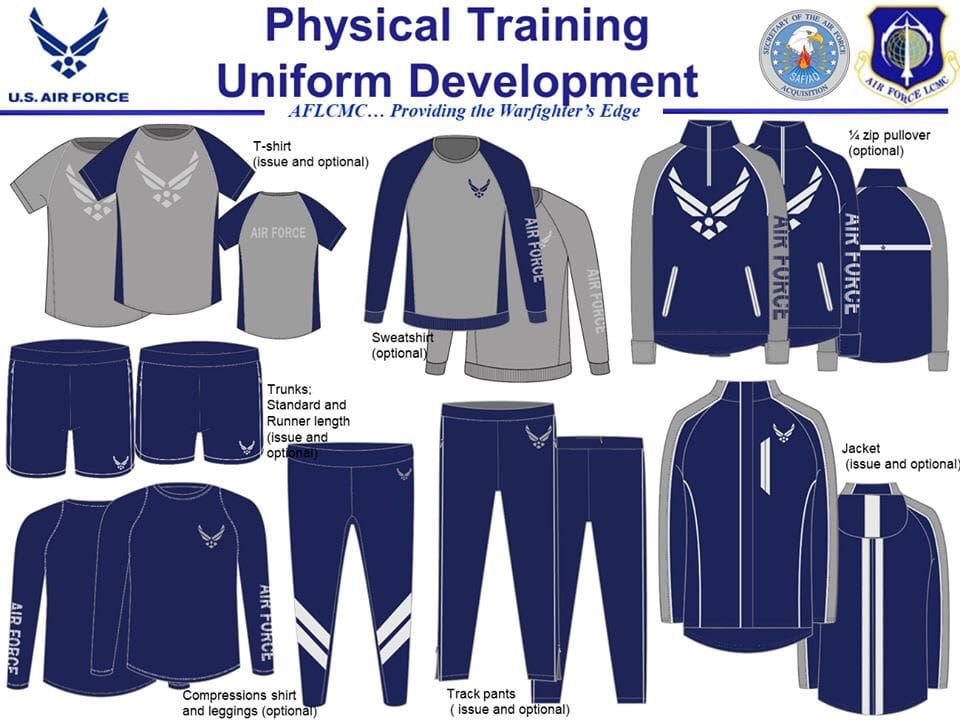
What do you think?
Facebook group Air Force AMN/NCO/SNCO posted a couple of slides of proposed Physical Training Uniform Designs.


What do you think?
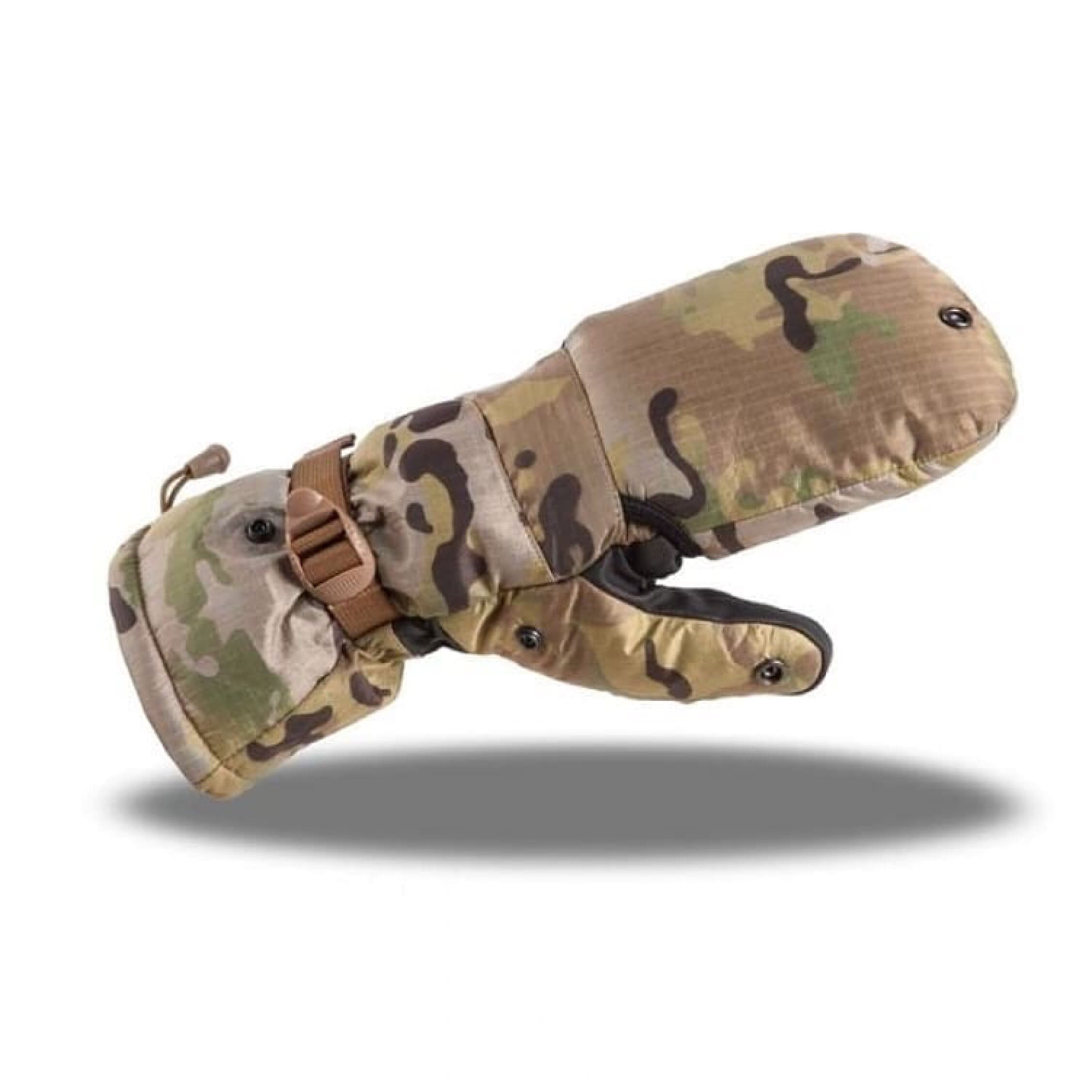
The Sk7 Glacier Glove is insulated with 150 gram Thinsulate insulation and incorporates a waterproof breathable Hipora Beta liner and a water-resistant nylon shell. The closure buckle is YKK and the shell features a nylon loop on middle finger for quick glove removal.
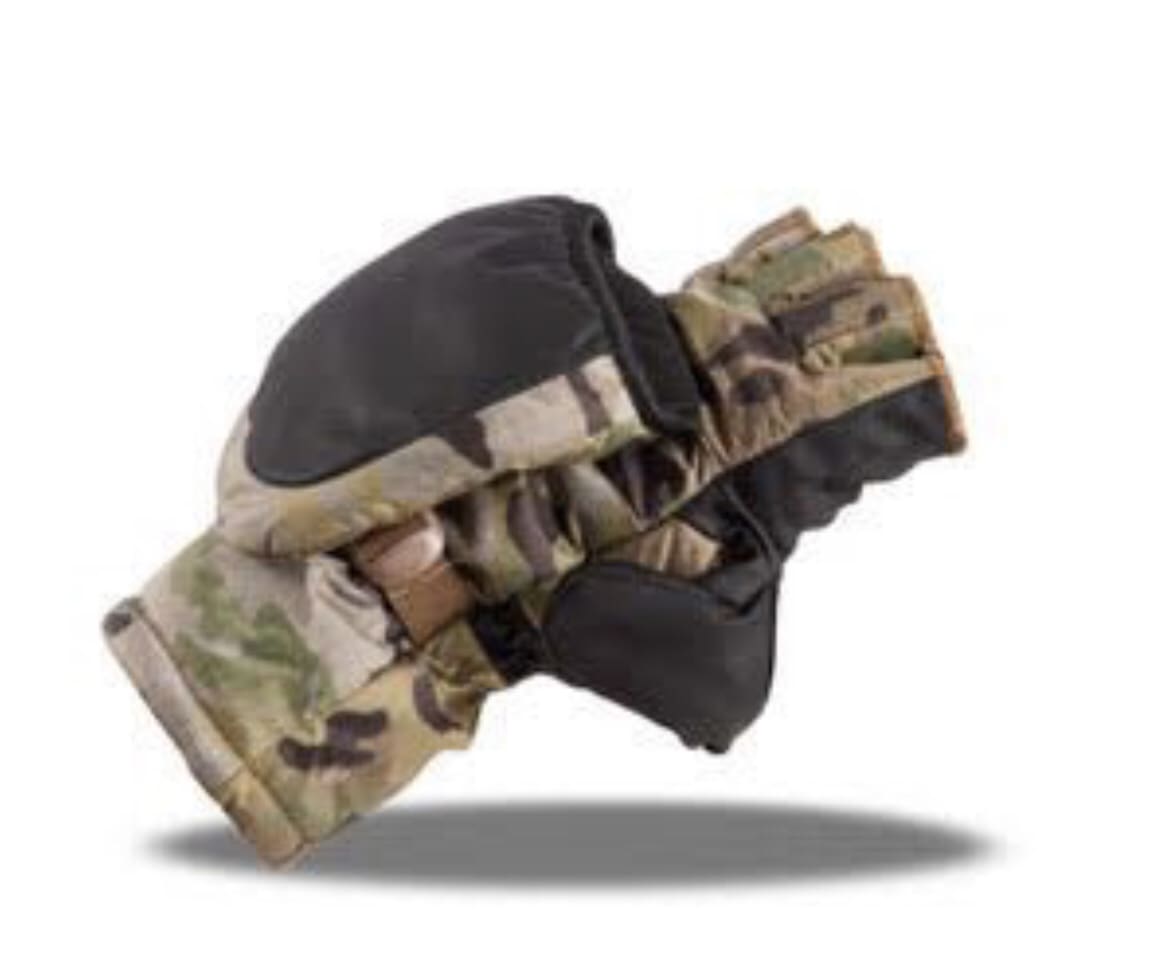
Beneath the mitten flap are half finger protection to facilitate dexterity.
Get yours at www.0241Tactical.com.
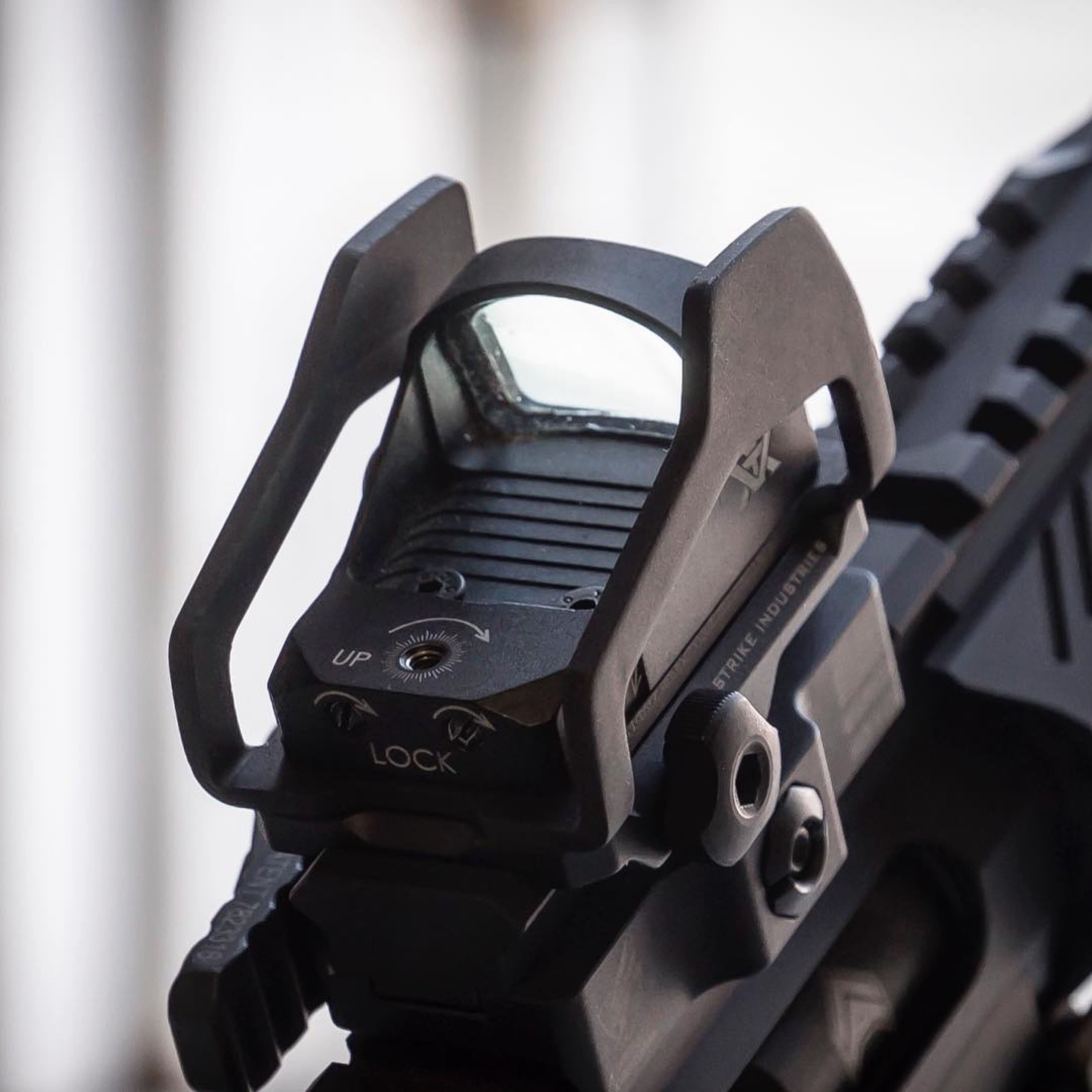
SI’s Reflex Exoskeleton Mount accepts a wide variety of reflex optics. The patent pending Universal Mounting Pattern enables users to attach various optics of their choice. Included mounting posts securely hold your optic firmly in place. The shield is precision cut and made from steel with a QPQ black finish while the universal mount is hard anodized black. Included with the Exoskeleton, is a lightweight, low profile Picatinny mount that can be used stand alone to save weight. Combined, they offer the highest degree of protection from impacts and shock. At just over 2.5 oz total, the Strike REX is a low-profile, minimalist, must-have accessory for your reflex optics.
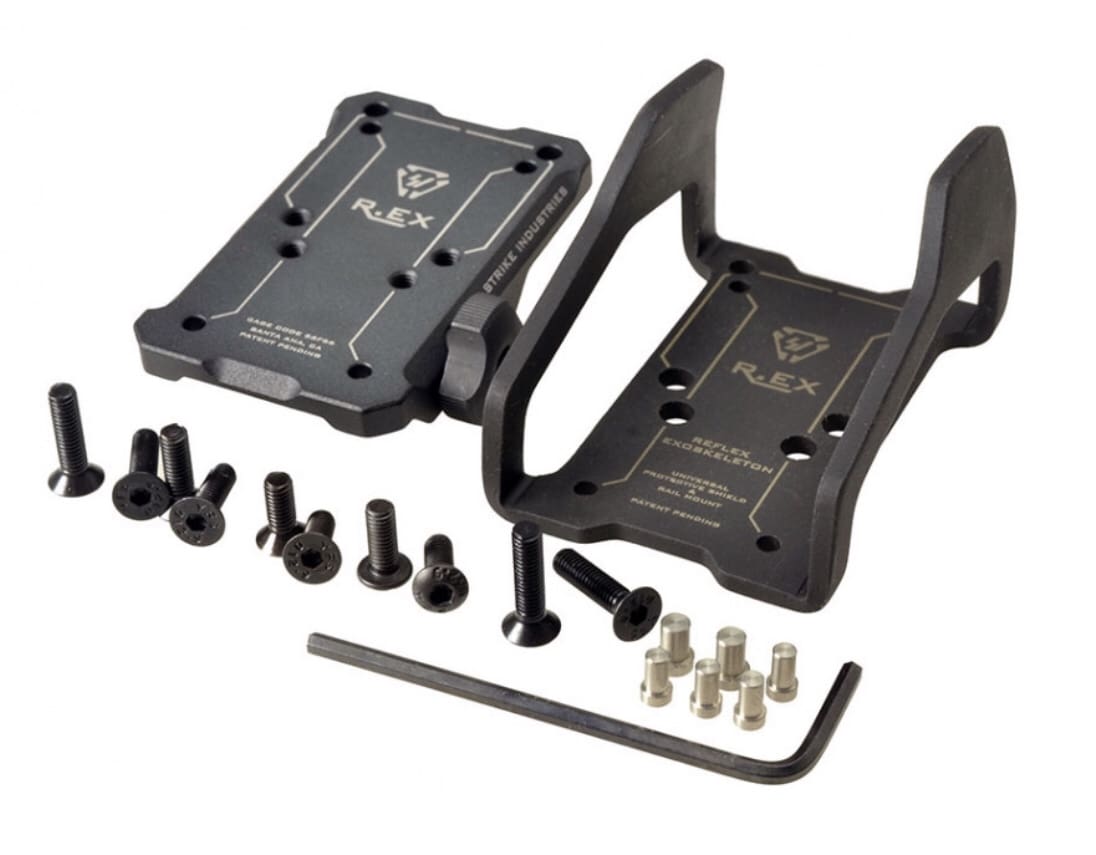
Package includes:
– 1 x Reflex Exoskeleton
– 1 x Reflex Exoskeleton Mount (Picatinny/NATO Accessory rail compatible)
– 1 x 8 mounting posts
Compatible Patterns:
– Docter: Burris Fastfire, Docter, Vortex Viper, Vortex Venom, etc.
– Optima/JP: Leupold Delta Point, Redfield Accelerator, Trijicon TRD, etc.
– Trijicon: Trijicon RMR
www.strikeindustries.com/shop/reflex-exoskleleton
Viking Tactics is offering two knife styles.
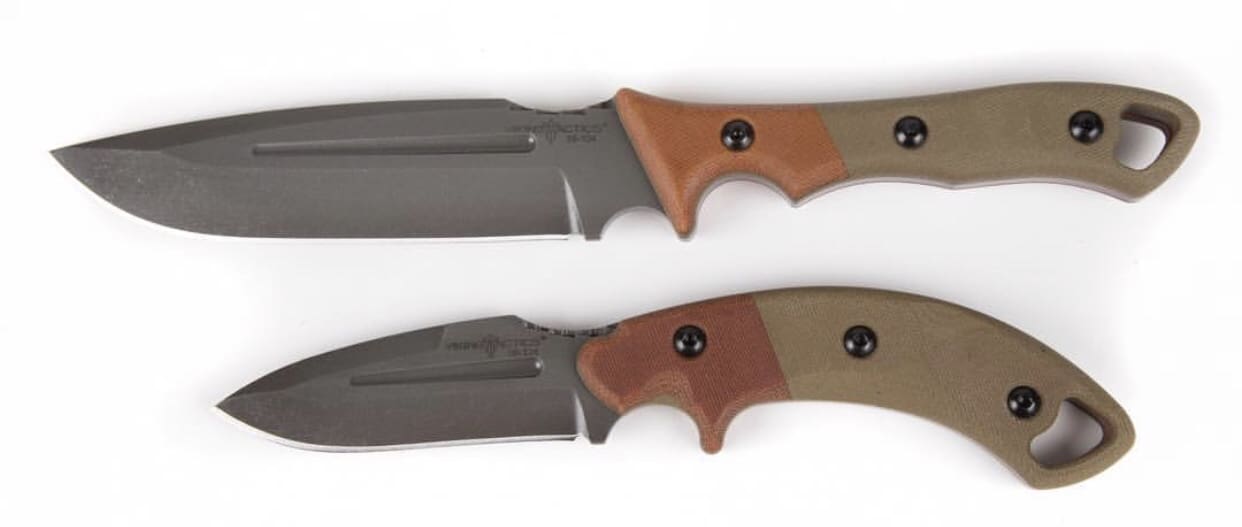
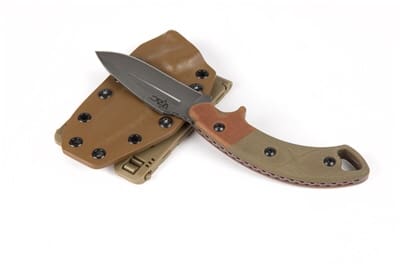
Drawing from the Bloodlines of VTAC’s first ever knife design, “The Assault”, the Crusader is nearly 9 inches long and has a cutting surface 3 ½ inches in length. The spine of the blade has a Viking Vine machined into the surface for aesthetics as well as to enhance the gripping surface. This coupled with the blood colored liners and Canvas Micarta make a beautiful knife. The blade is built from 1095 steel and hardened to RC 56-58.
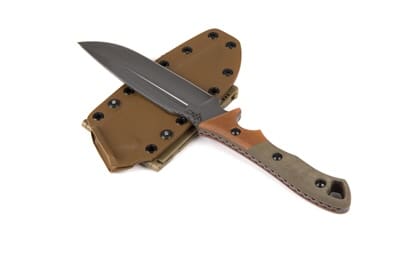
Drawing inspiration from a knife made by one of SGM Lamb’s Soldiers who was killed in action in Iraq on 17 June 2005, the Norseman has an overall length of 11.63” and a cutting surface of 5 ½ inches. Made from 1095 steel and hardened to RC 56-58, this blade will cut easily and can be field sharpened. The VTAC Norseman’s spine is decorated with a Viking Vine, and Blood Colored handle liners.
The Crusader and Norseman are available from www.vikingtactics.com.
“Steps Ascending: Rise of the Unarmed Forces” by Matt Griffin and Leo Jenkins chronicles the authors’ transition from military to vetrepreneurs and their goal of change in Afghanistan using business, not bullets.

Just like with their Combat Flip Flops, every copy of this book sold sends a girl in Afghanistan to school.
Available through Amazon.

“The pace of technology development in electronics and sensor technology is accelerating,” said Ryszard Bil, Chief Technical Officer (CTO) at HENSOLDT. “It is therefore extremely important for a sensor house like HENSOLDT to remain in close contact with research and to incorporate new findings into product developments.
The prize, worth 1,500 euros each, has been awarded for 16 years. The award ceremony took place during the annual Professors’ Day at HENSOLDT’s Ulm site. Professors from renowned universities and colleges as well as experts from the company regularly use this platform to exchange knowledge. A jury of university professors and company experts selected six outstanding theses from numerous submissions, one from the University of Ulm and another from the Ulm University of Applied Sciences.
Denis Schlotthauer studied at the Faculty of Engineering and Computer Science at the University of Ulm. The prize was awarded for his master thesis supervised by Professor Christian Waldschmidt on the development of a radar-based vibration sensor for use in medical technology. The award also went to the bachelor thesis supervised by Professor Roland Münzner of Dennis Böhm, who studied at the Institute of Communication Technology at Ulm University of Applied Sciences. He impressed the jury with the development of a calibration method for computer chips in radar systems that only takes one percent of the time previously spent.
Hans Schily developed a mathematical method for the detection of a large number of small objects that are difficult to distinguish in his master thesis supervised by Professor Wolfgang Koch at the Fraunhofer Institute for Communication, Information Processing and Ergonomics (FKIE) in Bonn. These findings can be used to improve driver assistance systems.
Katharina Klein also studied at the FKIE and earned her “Argus” prize with her bachelor thesis on the use of artificial neural networks to predict radar signals, for example in car traffic. Her work at FKIE was supervised by Sabine Apfeld.
At the Institute of Technical Electronics of the Friedrich-Alexander University Erlangen-Nuremberg (Professor Robert Weigel), Jonas Fuchs wrote his master thesis on the improvement of the accuracy of radar sensors by artificial intelligence methods. The jury also considered the master’s thesis submitted by Maurice Hott under the guidance of Professor Peter Höher at the Institute for Information and Coding Theory at the Christian-Albrechts-University of Kiel to be worthy of an award. The prizewinner developed novel signal processing methods for radar systems that use several antennas simultaneously and therefore work faster and more accurately.
In his laudation, HENSOLDT Technology Manager Dr. Guy Kouemou emphasized: “New products that help our customers to make means of transport safer and more efficient, for example, require a great deal of detailed research. The outstanding graduates of our partner universities make a valuable contribution to this.
HENSOLDT’s Ulm site employs around 2,000 people who develop and manufacture complex safety electronics, including radars, electronic protection systems and high-frequency electronic components. The majority of the employees are engineers and technicians, about 180 young people are in training.
Spilling Blood in the Same Mud Since 1917.

This year saw the launch of Ground Hammer Beer in Hereford. The brand hopes to release stateside at Ft Bragg NC in early 2019, with the help of some SOF friends over there.
They brew traditional British beers made with American hops. It’s a tribute to over 100 years of standing side by side with their American cousins.

Proceeds from each beer sold go towards The SAS Regimental Association, who support the welfare of both soldiers and their families. Registered Charity No. 254393
They are looking for outlets and bars who’d like to stock it and put funds back into great causes.
Instagram:@groundhammerbeer